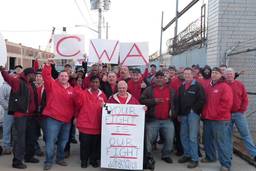WASHINGTON D.C. — A workplace safety program popular with companies because it allowed them to self-police themselves is now coming under review by the Department of Labor, the Center for Public Integrity (CPI) announced two weeks ago.
In 1982, President Ronald Reagan started the Voluntary Protection Program — aka the model workplace program — which allows companies to be exempt from Occupational Safety and Health Administration (OSHA) inspectors examining their workplaces on a surprise basis. Companies agree to implement a safety compliance program that they would be trained for (with OSHA dollars), and in exchange, if OSHA thinks they have a good program in place, the federal agency agrees to not inspect their worksites.
The program was seen as a way to incentivize companies to improve safety through the promise of OSHA funding for safety training and by not inspecting their worksites if they implemented the program. At the same time, some safety advocates thought that by implementing the program, they could improve safety overall by limiting the number of troublesome work sites OSHA would need to inspect with its limited staff and budget, thus giving the agency the ability to pay more attention to troublesome worksites.
Things turned out to be more complicated than that. A recent 2009 GAO study showed that the safety of the sites under the Voluntary Protection Program was not much better than sites that OSHA was continuing to inspect. While the EPA discontinued its voluntary protection program in 2009, OSHA continued its program. “The program was popular with some Democrats because it allowed them to say they were achieving workplace safety goals while not overburdening bussiness with regulations,” says Public Citizen’s Workers Safety and Health Advocate Justin Feldman.
Currently, more than 2,400 work sites across the country are members of the program and thus exempt from inspections. A recent investigation by the Center for Public Integrity (CPI) showed that since 2000, more than 80 workers have died on the job on sites in the Voluntary Protection Program. According to the CPI, in 47 of the 80 deaths in the Voluntary Protection Program, OSHA later found serious workplace safety violations that contributed to their deaths.
The investigation also showed that in addition to the program not preventing serious safety deaths, it was also not being implemented properly. After major safety violations occur that result in a death, companies are supposed to be removed from the self-policing Voluntary Protection program.
However, the CPI’s investigation found that 65 percent of the worksites at which a worker died in a safety accident remained in the OSHA’s self policing Voluntary Protection Program. The investigation showed that OSHA did not even have a complete database of all the workplace deaths that had occurred at VPP sites.
As a result of the investigation, OSHA has ordered a task force to review the Voluntary Protection Program. “There are some legitimate questions out there about the legitimacy of the program, and we want to make sure that all the participants in the program should be in the program,” Deputy Assistant Secretary of Labor for OSHA Jordan Barab told CPI.
However some claim that the Voluntary Protection Program is a corporate welfare program that companies use to get free training and avoid safety regulation.
“If you look at the list of who is in the program, it’s big corporations. Why does a corporation making $5 billion a year in revenues need OSHA to pay for its safety training?“ asks Feldman. “It could hire the same staff at the same salary with its own money. The program should be focused on small business that requires such assistance. I don’t really see the program as anything more than something that can be used to buy political support for Democrats in the business community.”








